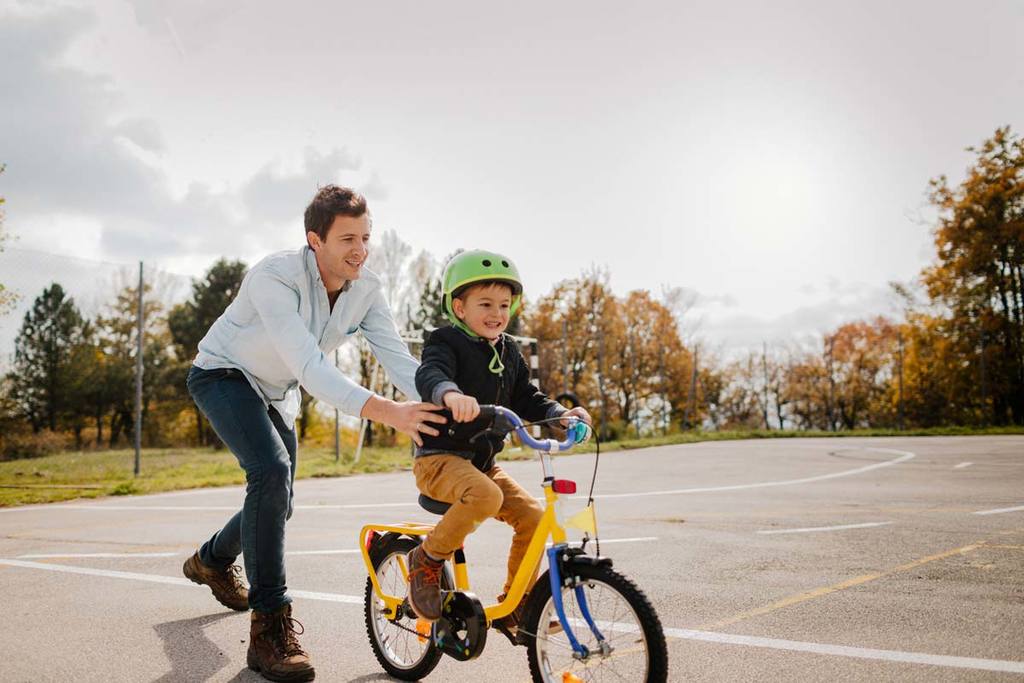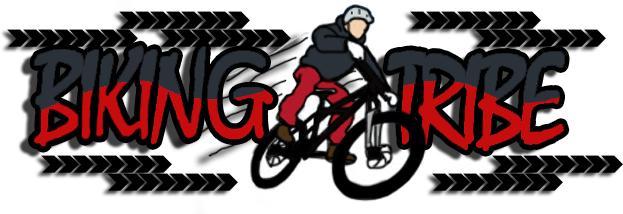- You are here:
- Home »
- General
- » The Best Bike for 4-Year-Olds

The Best Bike for 4-Year-Olds
Finding the right bike for your child can be incredibly difficult. Whether you are looking for mountain bikes, road bikes, BMX bikes, bikes for off-road riding, or just standard kid’s bikes, there are different bikes that are best for different age ranges. Therefore, finding one that is perfect for your four-year-old can sometimes feel impossible. You want to make sure you get something that they’ll be comfortable riding while also feeling as safe and confident as possible. To make things easy for you, we’ve compiled a list of the best bikes for your four-year-old!
What to look for when buying a bike for your child
There are many things you have to take into consideration before actually purchasing a bike for your four-year-old. To keep things simple and to the point, we’ve broken down the aspects of bike buying that you need to deliberate about. Each of these aspects is specific and individual to you and your child. What works for one person, however, may not work for you and your kid—and it’s important to take the time to research and look at a variety of options before you buy so that your child will be as safe as possible. And have as much fun as possible!
Always look at the size
Of course, you never want to buy a bike that is too big for your son or daughter—they won’t be able to handle it. Size is incredibly important and is a key component of safety and making sure your kid is as safe as possible.
Bikes are usually sized and measured by the diameter of their tires. For the most part, 12” and 24” tires are the most common sized kid bikes. However, you have to look at more than just the tires when thinking of size. Make sure you study the seat height as well, as this measurement will really help tell you if the bike is too big or too small for your child.
To break things up, here are the ages and sizes of bikes that are most commonly attributed to each other:
Again, these are just common sizes. It really really depends on your child’s size, along with the seat height.
Consider the weight of the bike
You really don’t want your child trying to first ride a bike that is incredibly heavy for them to handle. The weight of the bike is really important and should be around 40% of their weight. However, this can sometimes be really hard to find, as kid bikes can be much heavier than this.
To try and combat this, try and find the lightest bike in your price range that would make a great addition to your child’s life. You and your child are much better off with a lighter bike than a much heavier bike that your kid can’t even handle. For the most part, a great weight to consider when buying a bike for your child is 12 lbs.
Look at the balance of the bike
The balance and overall shape of the bike are very important for beginning riders. For the most part, starter riders do best with bikes that are lower to the ground while also have a longer wheelbase. Four-year-old riders also should have mid-rise handlebars, if at all possible. This leads to an incredibly comfortable learning experience for your child. Sometimes, other shapes of bikes (and all their little components) can leave small children to be uncomfortable while learning to ride for the first time.
Evaluate the brakes
There are two main brakes that you can find on children’s bikes: coaster brakes and hand brakes. Coaster brakes are the standard back pedal brakes that you’ll probably find on most kid bikes. Hand brakes are just that: the ability to initiate the brakes from the handlebar. Of course, with handbrakes, you need to properly test them. Children don’t have the strength that grown adults do (of course), so test out if you can actually use these brakes. The common way to do this is by trying to use the handbrake with your pinky—if you can’t pull it, chances are your child won’t be able to, either.
It’s important to test both forms of brakes, no matter what. Also, make sure you take the time to properly educate your child on how to use the brakes. It’s important to make sure your child knows what to do prior to them even riding the bike for the first time.
Consider your budget
Budget and price are very important. As you well know, your child is going to outgrow their little bike in no time. This definitely puts a damper on buying a bike that is best for your child (depending on your budget), as a lot of great, high-quality children’s bikes are quite expensive. However, there are some cheaper options that, while not perfect, are still great and can help your child learn to perfect their riding skill.
We really don’t recommend buying a bigger bike that your child will grow into when it’s older, as this can really inhibit the learning process. It will be harder for your child to learn and is really unsafe (as the bikes tend to be bigger). Therefore, we always advise buying the bike that fits your child the best, even if they will outgrow it in the near future. This helps them learn and feel comfortable while riding, which is always the main goal.
The best bikes for 4-year-olds
Now that we’ve talked about what you should look for when buying a bike for your four-year-old, it’s time to go through the best bikes you can buy them. Detailed and broken down into pros and cons lists, these are the absolute best bikes for your small child.
The Cleary 12” Single Speed Bike for Kids weighs about 15.8 pounds, which is a really great bike weight for four-year-olds. If you choose to use the freewheel option and remove the coasters, this drops the weight of the bike down to 13 pounds. For the most part, the seat height ranges from 15” to 18” and you can even have an optional short seat post if needed.
To keep things simple, here are the pros and cons of the Cleary 12” Single Speed Bike:
Pros
Cons
The Woom 3 Pedal Bike is a high-quality alternative to some of the other cheaper bikes on the market. If you’re worried about the overall balance and geometry of the bike, the Woom 3 is known for how well-suited it is to young children. With dual hand brakes that are color coordinated and a weight of only 12 pounds, this bike hits all of the checkpoints. However, the expensive price can be difficult, especially if you have a lower budget. Even if you do splurge and buy this one, though, it can really help your child learn how to ride because of the overall geometry.
To keep things simple, here are the pros and cons of the Woom 3 Pedal Bike:
Pros
Cons
The Critical Cycles Cub No-Pedal Balance Bike for Kids main purpose is to help bring confidence to children as they first learn to ride a bike. With no training wheels, the design is quite safe and brings balance and coordination at hand, helping children learn properly during their developmental stage. With minimal assembly, these tires are also air-free, meaning they’ll never go flat. Overall, this bike can fit children from 20 months to five years—and the seat posts and handlebars can be adjusted through growth and size differentiation.
To keep things simple, here are the pros and cons of the Critical Cycles No-Pedal Balance Bike:
Pros
Cons
The Strider Sport Balance Bike is a cheaper alternative that is made from high-quality materials, while also being an effective learning tool for any children first starting out. At only 6.5 pounds, this Strider bike is one of the lightest bikes around, helping children navigate and have complete control over their bike and their riding. This Strider model also comes with a seat height of 11” to 19”.
To keep things simple, here are the pros and cons of the Strider 12 Sport Balance Bike:
Pros
Cons
The Banana Bike LT, now an improved model, is efficient for first-time bike riders that need an easy place to start. With a saddle that can be as low as 12.2”, even smaller children can learn efficiently from this bike. The Banana Bike LT is durable, yet lightweight so that children can easily handle and use the bike for all its purposes. The tires are EVA foam tires, meaning that they cannot be punctured, which means no flat tires. Because of the way this model is produced, this bike can be used both indoors and outdoors.
To keep things simple, these are the pros and cons of the Banana Bike LT:
Pros
Cons
Conclusion
Out of all of the bikes best suited for four-year-olds, the winner of this list is the Critical Cycles Cub No-Pedal Balance Bike for Kids. A low price, even for the high-quality material, this bike is (more than any other bike listed here) the best when it comes to overall geometry. As mentioned earlier, geometry and overall balance of the bike is so very important when young children are first learning to ride. This bike specifically makes it comfortable and easy for young children to learn as efficiently as possible. With the adjustable handlebars and seats, this bike also makes it easy for young children to grow and still use their trusty bike. And with those air-free tires, the maintenance level, or upkeep level, is so low that you basically don’t have to do anything once you set everything up properly. Overall, the Critical Cycles Cub Balance Bike is the best bike for young children of four years of age looking to ride.









